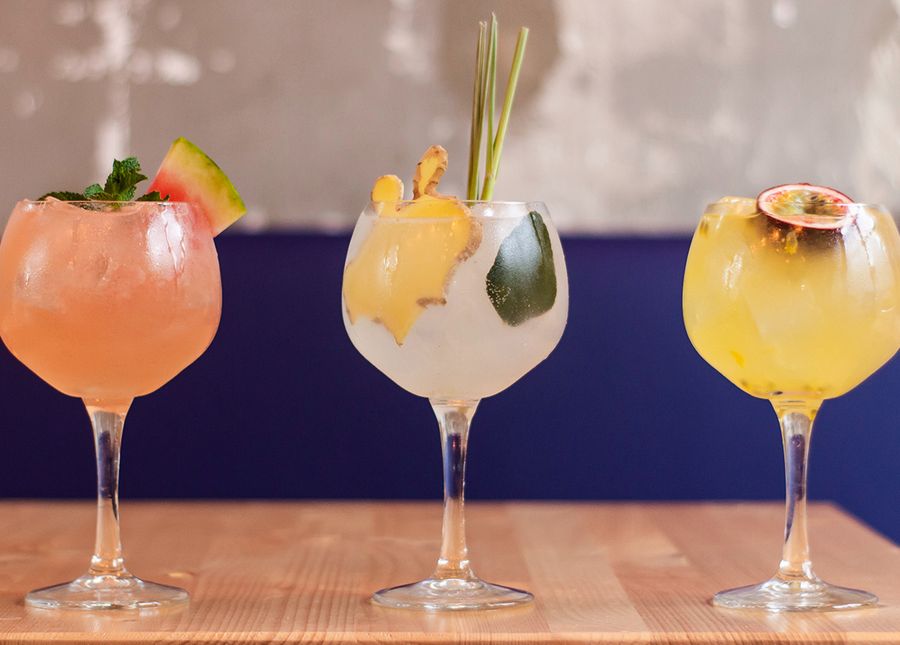Between Kendrick Lamar’s Pulitzer Prize for Music and the worldwide sensation of Childish Gambino’s confronting ‘This is America’ (don’t watch this if you’re squeamish), hip-hop music seems to have reached the summit of pop culture and vaulted straight over it.
Like it or not (and many people don’t), from its beginnings amid the deprived black youth of America’s racially divided cities, hip-hop is now officially a highbrow art form. How did we get here?
The roots of rap
Today’s black American music (like pretty much all modern musical styles since 1900) ultimately comes from Africa. From the early 1600s, when slaves started being transported to the American colonies, they carried with them the tribal rhythms and musical traditions of their home countries.
These cultural traditions persevered though 300 years of slavery, and tribal chants became plantation work songs. You can hear this ad-lib vocal style in the scat-singing of early jazz pioneers like Cab Calloway; Louis Armstrong is credited with popularising the style, and he even succeeded in getting the whiter-than-white Danny Kaye to scat. Quite an achievement.
The Bronx explodes
Gospel music and fifties rhythm and blues (R&B) had developed into soul by the early 1960s, and then funk in the early 1970s. Around the same time, the old black tradition of using rhyming slang to put down your enemies (and friends) was developing, for urban youth, into a new way of talking.
As funk blandified into disco, young black kids in the rough, tough, poverty- stricken Bronx turned away from its commercialised sounds and instead starting delving into the back catalogue of classic funk tunes. DJs played these discs at neighbourhood block parties, and became especially enamoured of the drum solos, sometimes playing the same song on two turntable decks at the same time to stretch out these solo breaks.
This was break-beat DJing, and its most famed proponent was DJ Kool Herc, a Jamaican transplanted to New York, now often called ‘the Father of Hip-hop’. ‘B-boys’ and ‘B-girls’ would dance to the breaks (this would later be dubbed ‘breakdancing’ in popular culture), and Herc worked the mike – shouting the names of dancers and rocking out entertaining rhymes on the subject of his DJing prowess.
Hip-hop had been born.
Old and new school hip-hop
‘Rapper’s Delight’ by the Sugarhill Gang, released in 1979 (think you don’t know it? No matter your age, you probably do), woke up the rest of the world to what was going down in the Bronx. In 1982, Grandmaster Flash’s ‘The Message’ (called the best hip-hop song of all time by Rolling Stone), with its vivid picture of urban poverty, was the first prominent hip-hip song to provide social commentary, pointing the way forward to everything from Public Enemy to Childish Gambino.
Run-DMC took hip-hop in a new, more rock-friendly direction musically and dropped the disco-glam look of the old-school rappers, adopting a street style – Kangol hats and Adidas trainers – which has had long-lasting effects on fashion in general. It was 1983 and hip-hop had already crossed over from old-school to new-school.
Public Enemy continued the hip-hop/rock mash-up and added a heavy dose of social commentary. And the West Coast of the USA muscled in on the rap scene with the emergence of gangsta rap, with its lyrics full of street bravado, focusing on threats against rivals and boasts about drug money and weapons. Pioneered by Ice-T (a New Jersey native), West Coast gangsta’s first great group was NWA, and its first blockbuster album was their Straight Outta Compton. Gangsta quickly become the biggest and most lucrative hip- hop genre.
Hip-hop goes white, and global
It must be said: whiteys have been taking black music and lamifying it for decades. Disco took sexy sweaty funk and made it glitzy and cheesy and then added the Bee Gees; Elvis, even though he shocked American churchgoers of the 1950s, was a considerably cleaned up version of his black inspirations like Little Richard. Many of the world’s biggest musical acts are shameless rip- offs of black sounds – from Elvis to the Rolling Stones to Adele (but definitely not Slim Dusty and Ed Sheeran).
The Beastie Boys, with their punk/gangsta/comedy mash-up were among the first white boys in hip-hop with their 1986 album Licensed to Ill and its middle- class lads’ ode to first world problems, ‘(You Gotta) Fight for your Right (to Party)’. A less honourable mention goes to Vanilla Ice, meanly, but perhaps incisively, dubbed ‘the Elvis of rap’. By the time we get to Eminem in the late 1990s, the misunderstood-white-boy-rappa is a genre unto itself, immortalised in his classic film 8 Mile. The fact that he was the USA’s best-selling artist of the 2000s says much about the profitability of mixing black musical styles with white artists.
Most nations now have a home-grown hip-hop scene (Yarmak is huge in the Ukraine), with the language often the only thing making the music slightly discernible from its US roots. For hip-hop with an Aussie accent, give Sydney’s Bliss n Eso or Adelaide’s Hilltop Hoods a listen. It’s really very good.



